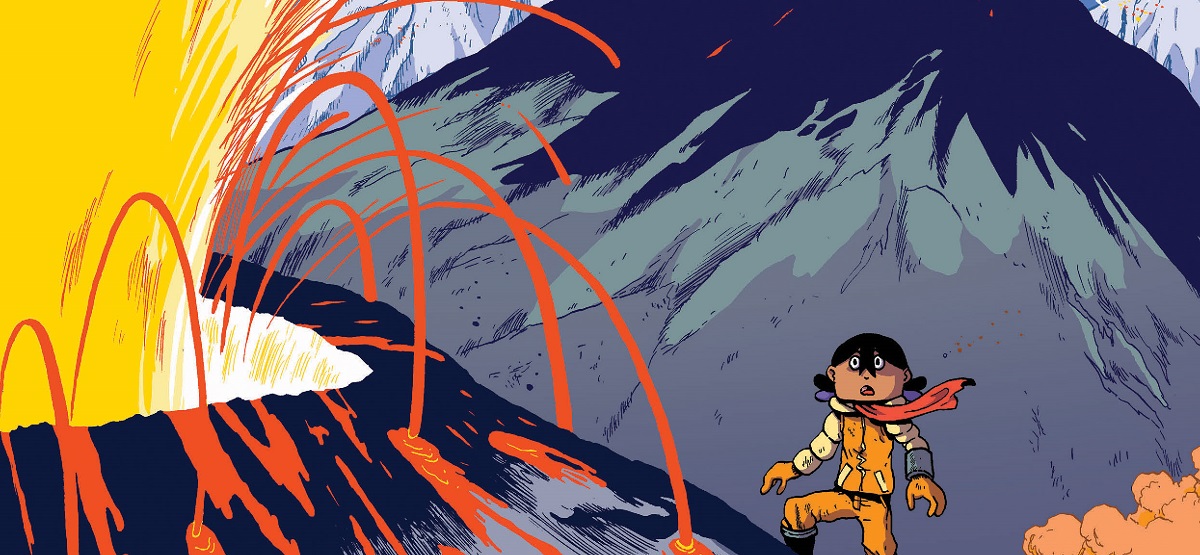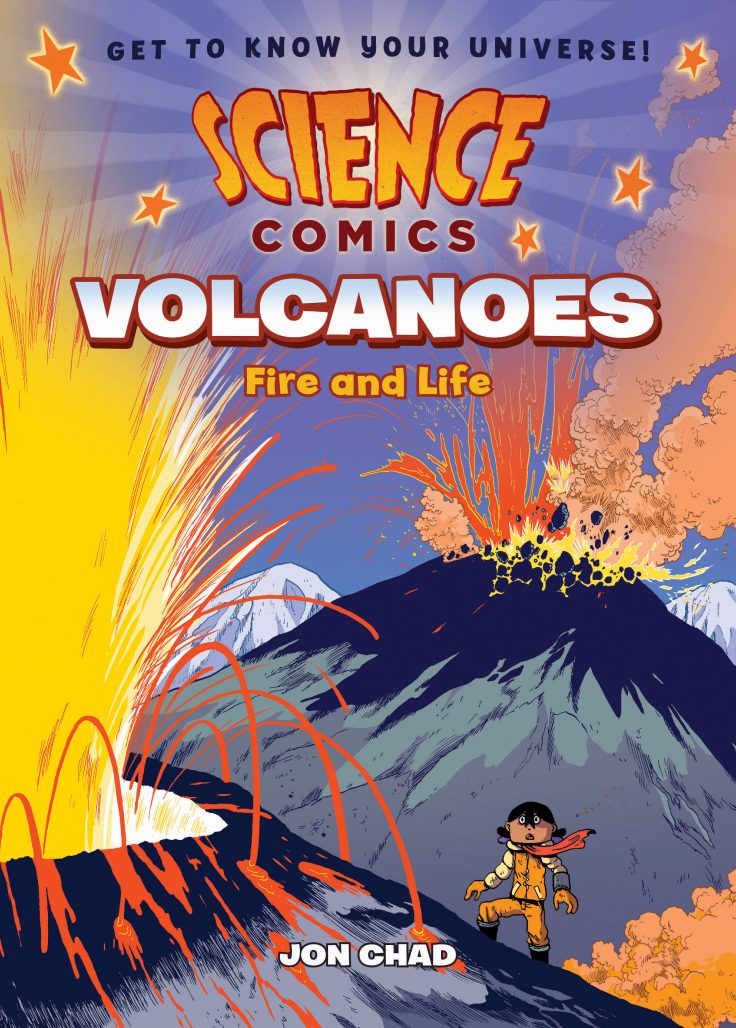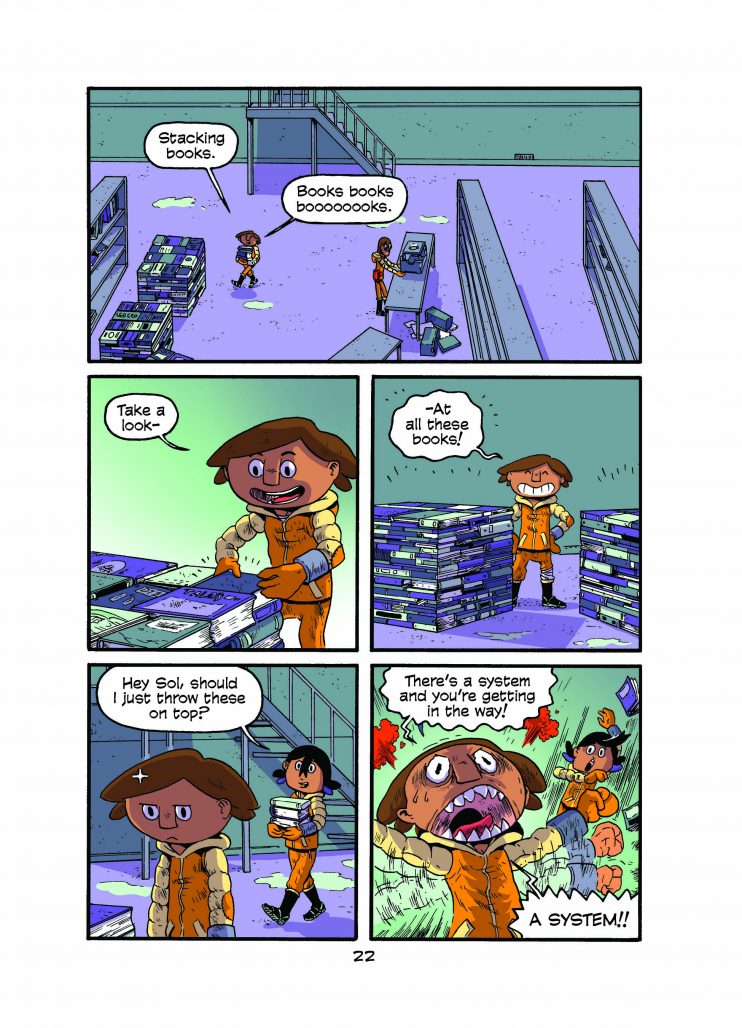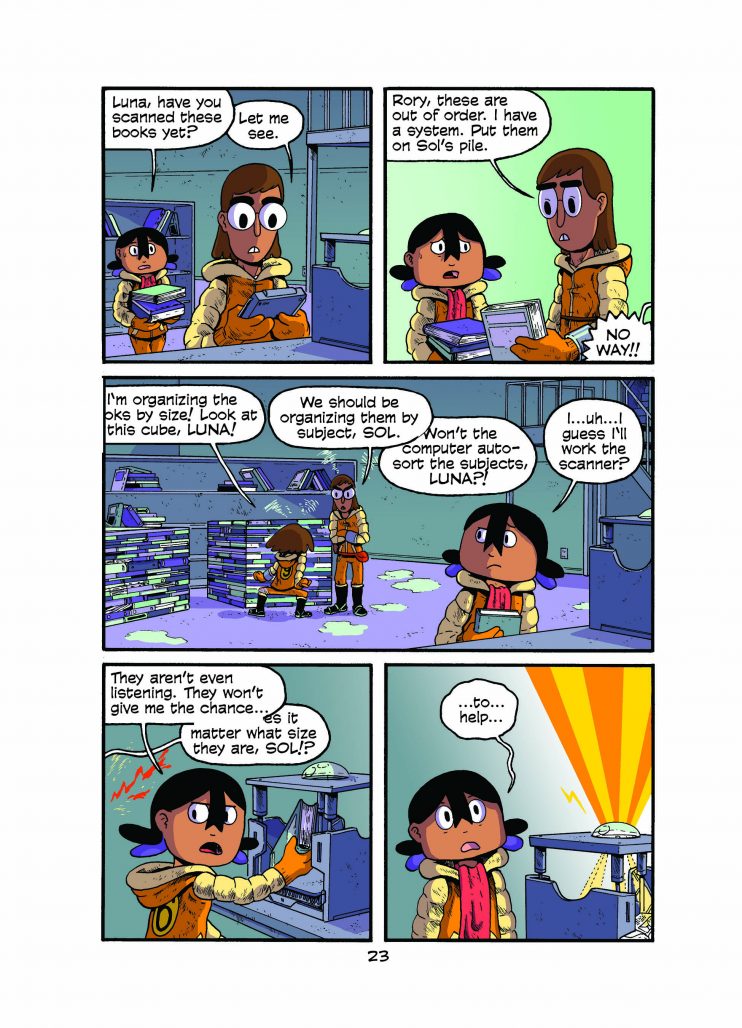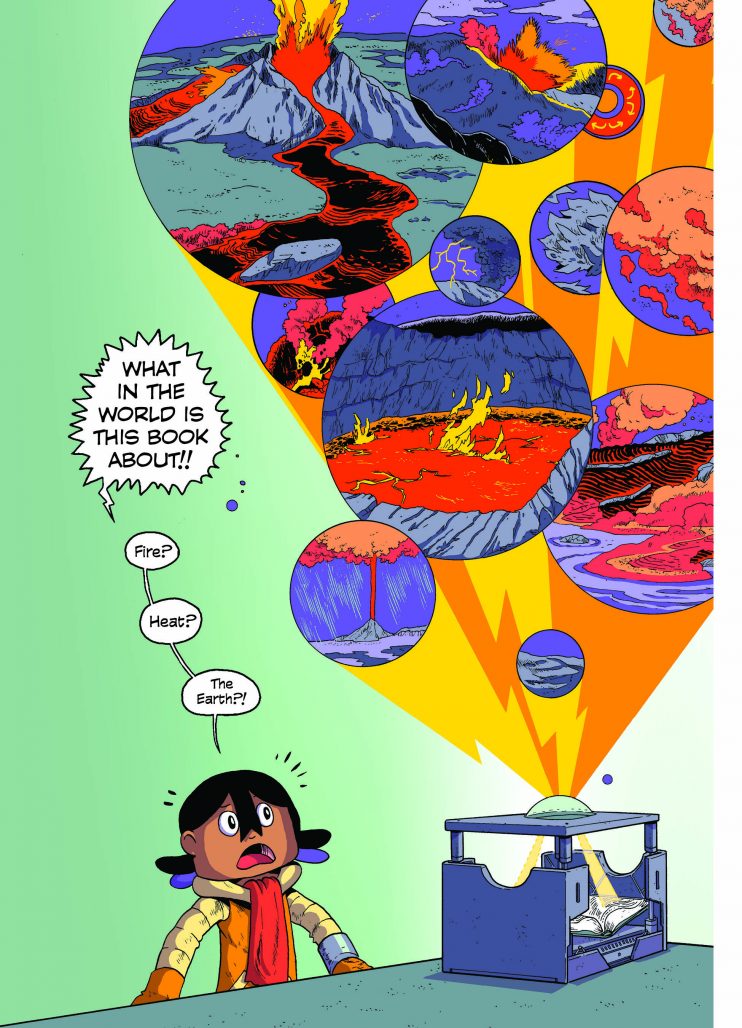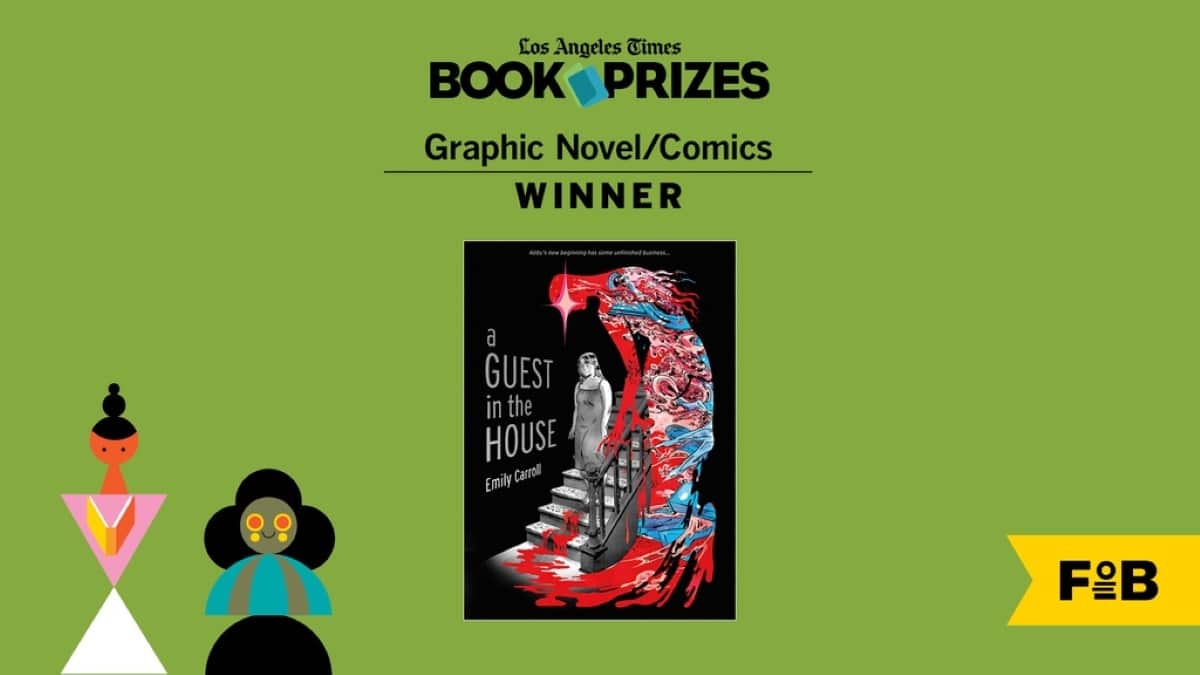
Recently, The Comics Beat sat down with Chad to discuss his new book and the issues that face our environment today.
Alex Lu: Jon, what first sparked your interest in volcanoes and tectonic activity?
Jon Chad: I think I’ve always been interested in volcanoes (and maybe more so lava) in a larger sense, but I remember getting really interested in volcanoes after reading about the 1980 Mt St Helens eruption. This was probably in later middle school. I understood lava to be the gold standard of volcanic danger, but in reading about St Helens, I realized that volcanic ash is many times more deadly.
As morbid as it sounds, I found volcanic ash to be very interesting; its structure, its size, its ability to destroy electronics, its wild increase in density when mixed with water, etc. From there, I sort of worked backwards, reading about how volcanic ash is formed, and what sort of volcanoes erupt ash more than others.
Lu: The world you’ve created in Science Comics: Volcanoes has a decidedly dark tone to it in premise. When you look at the state of affairs surrounding the way we treat the environment, what stands out to you as the major issues facing us today? Do you think that we could someday end up in a world similar to the one Aurora, Sol, Luna, and Pallas live in?
Chad: I absolutely don’t think it’s out of the question. The idea of a volcanic eruption causing global temperature decreases is a very real thing. I think that emissions are our biggest problem, and while our current brand of pollution is depleting the ozone and increasing global temperatures, it stands to reason that other things could veil us from the sun and decrease temperatures. Emissions and temperature are directly connected, and then temperature is connected to everything else.
Lu: What inspired the aesthetic stylings of the tribe members we see throughout Volcanoes? Both Aurora and her mother wear their bangs down the center of their face in an interesting way. The group’s field jackets have some interesting design elements such as numbers sown into the backs as well.
Chad: The jackets are modeled after the jackets that they issue on McMurdo station in Antarctica. Most of them have a fur, or faux-fur, hood, but I simplified it to an insulated down hood. I had drawn up several designs that were much more futuristic, and had full visors on them to keep out the wind, and protect the wearer from snow blindness, but I wanted to keep the characters faces unobscured. I ended up using that original design on Pallas’s teacher during the flashback at the end of the book.
Ha ha, as far as the bangs go, I think that is probably my love of anime showing through in my character design. With Aurora, I can say that her bangs are just one more visual marker to separate her from Sol when their hoods are up, but with Pallas, there’s no other reason. I just wanted to give her anime bangs.
Lu: Towards the climax of the story, you ingeniously liken different types of volcanoes to Sol’s, Luna’s, and Pallas’ reactions to Aurora accidentally sealing off the entrance to a clothing store. How do you think these types of metaphors aid children’s’ understand of scientific subjects?
Chad: One of the main points that I wanted to drive home in the book is that the Earth isn’t some sort of big, dumb, rock; it’s alive and moving underneath our feet. I think anytime we take a scientific concept and liken it to a human experience, a child is going to connect with it more. Photosynthesis can seem alien to readers, but if you instead approach it as, “this is how plants eat” then they can relate to that experience.
Lu: On a craft level, it seems complicated to balance the dissemination of scientific information and storytelling in Volcanoes. What steps did you take to make sure you struck that balance and kept the story moving while never forgetting to educate readers in the process?
Chad: It can be tricky. The part of the book that you mentioned earlier is an example of the ideal scenario; when you have a concept that can be immediately related to the narrative. Connecting the information to a task the characters have to do, relating the danger of a scientific process to the danger that a character is facing, drawing parallels. That’s the best case scenario. Other times, though, there are just some facts about magma viscosity that you just HAVE to get in there. Sometimes science facts can be watered down and inserted more seamlessly into conversation or character action, but there’s just some times that I needed to bite the bullet and get a fact out there. When I was writing the book, I would stop myself every 5 pages, or so, and ask, “Will the reader remember what the characters are doing or where they are?”
Lu: The intersection between art and science is one that often feels smaller than it really is. As a cartoonist who has now produced several titles that prominently feature scientific concepts, what do you personally feel like illustration brings to science education?
Chad: I love how the form of comics allows you to play with time. I’m able to take the reader through geological processes, which take millions of years, in just a couple of panels. Comics are great at showing scale, and not just in the sense of zooming in to show a particle of volcanic ash. I can also create comparisons between two figures or facts, and put them in proportion to one another so that them more understandable. For example, I can compare, in illustrations, the speed of a volcanic ash fall to the world’s fastest car. It’s one thing to just say, “it goes XXXXX km per hour!” but that won’t mean anything unless I can provide them the metric for comparison.
Most importantly, though, I feel as if fact and fiction do not need to be exclusive, and that exciting, vibrant visuals, even those that portray monsters and hover bikes, can be used to engage kids and get them excited about the content (i.e.: science). Some times, it feels like cheating. Of course a kid is going to be excited at the visual of a sharp-toothed monster digging through the earth. But, if that monster creates a memorable moment in the book that can help cement a fact in the reader, I’ve done my job!
Lu: For those of us concerned about our environment and climate change, what resources would you recommend reading and what organizations can we get involved in to help?
Chad: I would first recommend going to your local library and first doing a little reading about weather and climate, not just climate change. Understand how the Earth should work in a perfect system before engaging in how we are operating counter to that. For information on current climate matters, I tend to visit sciencedaily.com.
There are a lot of great organizations out there doing work to protect the environment. A couple that leap to mind are the Center for International Environmental Law, Earthjustice, and the Sierra Club.
I can give the usual advice to conserve resources in your home (water, electricity, etc), but also, DON’T WAIT FOR GREEN UP DAY TO COME AROUND. May is always too far away. Go to your town hall and ask for a trash bag, and let them know you’d like to help clean up one street or one block. Creating visibility in your community about the importance of pollution and liter can be just as valuable as the trash you’re picking up.
Science Comics: Volcanoes is out now!


